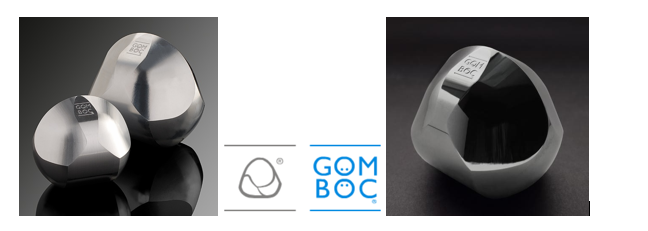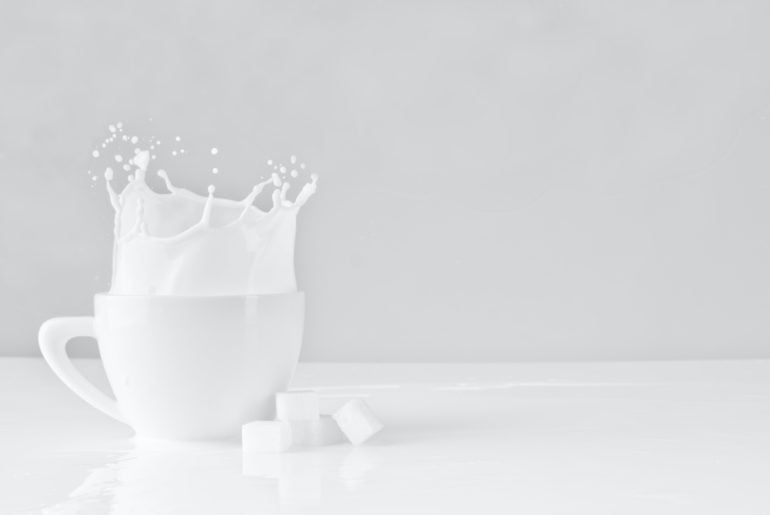The question referred for a preliminary ruling by the Kúria (the Hungarian Supreme Court), dated 23 April 2020, was raised in connection with the application for a three-dimensional trade mark filed on 5 February 2015 by the company Gömböc Kutató, Szolgáltató és Kereskedelmi Kft. (hereinafter ‘Gömböc’), before the Hungarian Trademark Office (Szellemi Tulajdon Nemzeti Hivatala), which refused the Application. In particular, the application contained a three-dimensional element and claimed protection in Class 14 for decorative items, Class 21 for decorative items made of glassand earthenware and Class 28 for toys. The three-dimensional element is reproduced below:

To obtain a better understanding of the three-dimensional object for which protection was sought as a trademark, it is necessary to briefly dive into its context. The “Gömböc” (pronounced as “goemboets“) is the first known homogeneous object with a stable and an unstable equilibrium point, thus two equilibria together on a horizontal surface. It was a mathematical discovery of global relevance, to the extent that even a monument was built in its honour in Budapest. Today, the Gömböc is a design object that can also be bought in its official store.

Upon examining the scope of protection of the application filed on 5 February 2015 and pursuant to Article 3(1)(e) of Directive 2008/95, the Hungarian Trademark Office rejected the application for registration that represented a three-dimensional object which, due to its external design and the homogeneous material used, always returns to its balanced position. Thus, the shape of that object serves in its entirety to achieve the technical objective of always being straightened. In addition, account was also taken of the extensive use of the sign and its dissemination in the press.
In particular, as regards class 28 (toys), the Office stated that the three-dimensional shape of the object enabled it to function as a toy whose characteristic is always to return to its position of stable equilibrium. It is therefore a shape which is necessary to achieve a technical result within the meaning of Article 3(1)(e)(ii) of Directive 2008/95.
In relation to classes 14 (decorative items) and 21 (decorative items of glass and earthenware), the Office considered that the particular design determines the formal appearance and, therefore, the value of the product lies in the shape of that design within the meaning of Article 3(1)(e)(iii) of Directive 2008/95.
The Office rejected the claims of Gömböc Kft. in both first and second instance. Gömböc Kft. therefore appealed to the Hungarian Supreme Court (Kúria).
The Kúria, having assessed the case in its entirety, considered the case to be unclear in light of the case-law of the Court of Justice of the European Union (hereinafter the “CJEU”)[1] and referred three questions to the CJUE for a preliminary ruling:
1. The first question concerns the application of Article 3(1)(e)(ii) of the Directive, concerning the technical result. The Kúria asks whether the examination must be based solely on graphic representation or whether the perception of the relevant public may also be taken into account, given the high reputation of the sign.
In relation to the first question, the CJEU has ruled, at the outset, that it is not appropriate to limit the application of referred article of the Directive solely to the graphic representation of a sign. However, the CJEU divides the analysis to be carried out into two parts:
- Identification of the essential characteristics: at this stage whether information other than the graphic representation can be used (such as the relevant public).
- Establishing whether these characteristics perform a technical function: at this stage, the perception of the relevant public cannot be taken into account and information from objective and reliable sources must be used.
2. The second question is referred to Article 3(1)(e)(iii) of the Directive, relating to the shape which gives substantial value to the product. The Kúria asks whether that prohibition applies where the shape gives substantial value to the product on the basis of the consumer’s perception or knowledge of the product represented graphically.
As regards the second question, the CJEU ruled that the public’s perception or knowledge may be used to identify an essential characteristic of the sign which would give substantial value to the product, provided that that information is based on objective and reliable evidence. The above rule (Article 3(1)(e)(iii) of the Directive) applies only if it appears from the objective and reliable evidence that the consumer’s choice to purchase the product in question is largely determined by that characteristic. Finally, the CJEU stated that characteristics unrelated to shape (technical qualities or reputation) are irrelevant.
3. The third question concerns the same section (iii) of Article 3(1)(e) of the Directive: in that regard, the Kúria asks whether this provision must be applied systematically in cases where the shape is already protected by design or where the sign consists exclusively of the shape of a decorative item. Furthermore, since its aesthetic appearance alone gives substantial value to the product, the Hungarian Supreme Court wonders whether the absolute prohibition applies.
In relation to this point, the CJEU asserted that the coexistence of several titles of protection is permitted by law and that the provision may apply, in particular, to a sign consisting exclusively of the shape of a product which has artistic or ornamental value.
The CJEU also ruled that the goods applied for must not be necessarily the object of a rejection, unless it is clear from reliable and objective information that the consumer’s choice is largely determined by one or more characteristics of the shape applied for.
In its final analysis, the CJEU also stated that the mentioned norm must not be applied systematically to signs protected by designs or where the sign consists exclusively of the shape of an ornamental article.
Conclusion:
In the first place, in light of the above, it is surely very relevant to determine that the Judgment fills a fundamental and existing jurisprudential gap[2], that is, the use of external factors such as the public’s perception of the real product. In this sense, it is to highlight that this is the first time that the CJEU allows the use of an external factor in such an explicit manner. However, it must be borne in mind that the CJEU qualifies the use of the relevant public’s perception with respect to the real product only in the phase of identification of the essential characteristics, not allowing its use in the second phase, the determination of whether said characteristics perform a technical function.
Furthermore, the introduction of the concepts of reliability and objectivity of sources change the rules of the game and may yet be the new threshold or requirement for the Offices in relation to 3D marks, which implies rethinking the Applicants’ strategy. On the other hand, it will now be allowed to complement the graphical representation with other documents, provided that they come from reliable and objective sources.
It remains to be clarified by the CJEU to what extent it will be possible and by which criteria the “objective” evidence will be analysed in relation to the substantial value of a shape based on subjective concepts such as aesthetic appearance, beauty, among others. We will wait for the next case to see further developments to resolve this point.
[1] See CJUE Cases C-30/15 ‘Rubik’ and C-205/13 ‘Tripp Trapp’ baby seat, among others.
[2] See CJUE Cases C-30/15 ‘Rubik’ and C-205/13 ‘Tripp Trapp’ baby seat, among others.



